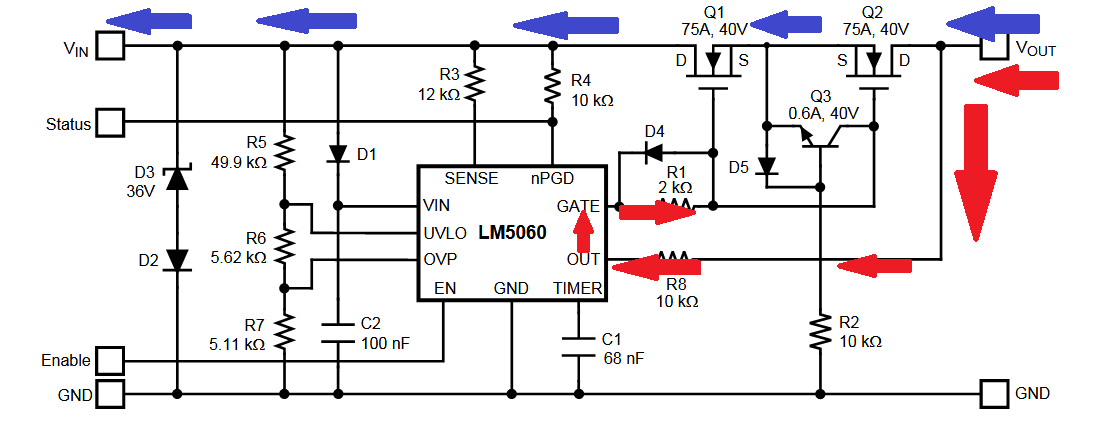I am using the LM5060 in a circuit configuration similar to Figure 41 of the datasheet. In our application, I have another circuit that can backfeed battery voltage to VOUT. It is possible also for this condition to occur in our end-application when VIN is unpowered. The resulting issue is that the battery voltage that is backfed to VOUT is coming back out of VIN as well, which is not desired. It appears this is occurring by VOUT backfeeding into the LM5060 OUT pin, through the internal diode (shown in the functional block diagram of Section 7.2 of datasheet), and back out the GATE (red arrows). Somehow, this gate voltage is high enough to partially turn on the MOSFETs which results in that voltage being present at VIN (blue arrows) and able to drive some significant current.
What is the best way to mitigate this issue? Would one potential solution be to connect OUT through a resistor to the common source of Q1/Q2 instead of the drain of Q2? Are there other options?



